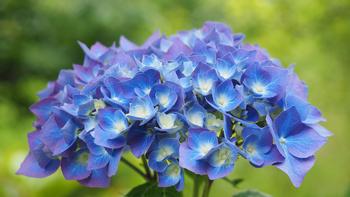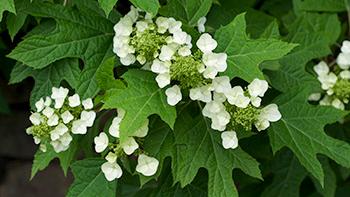Hydrangea - Mophead, Lacecap & Oakleaf Varieties
-
Scientific NameH. macrophylla; H. serrata; H. aspera; H. quercifolia
-
Image & InformationThese hydrangea varieties bloom in the early spring on wood that formed during the previous growing season.
 Hydrangea macrophylla. Photo: Wikimedia Commons
Hydrangea macrophylla. Photo: Wikimedia CommonsPruning is best performed in mid-summer, after the peak of the bloom. This timing is important, because it allows the plant to devote the remainder of the growing season to the development of the buds that will become next year’s flowers. That development occurs from the late summer to the early fall. Therefore, if a gardener has missed the mid-summer pruning window, it is best to wait another year to prune.
Removing spent flowers at the base can keep a plant looking tidy without cutting too deeply into the wood that needs to be preserved for next year's blooms. Hydrangea quercifolia. Photo: Wikimedia Commons
Hydrangea quercifolia. Photo: Wikimedia CommonsA plant that has become too large for its space may require severe pruning. However, heavy pruning may remove the wood on which flower buds form, resulting in a limited spring bloom. The return to a fuller flush may not occur until the following spring.
-
When to PruneMid-summer
-
Flowers/Fruit on New or Old WoodOld Wood
-
How & What to Prune
Remove dead, diseased, or damaged wood.
Remove or shorten crossing branches.
Remove up to one-third of the oldest canes, which become less productive over time. Cut them all the way to the ground to spur new growth.
On the remaining branches, cut back to a large, healthy bud. This may require removing 25-50 per cent of the wood that has grown since the spring. Do not remove more, because this is the wood on which buds will form for next year’s blossoms.


